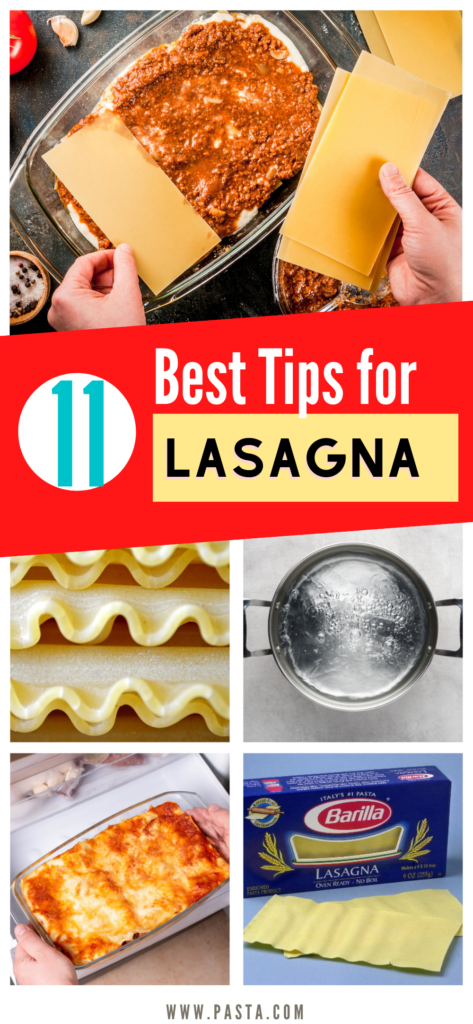Lasagna is a classic dish that’s perfect for families and large gatherings. In fact, it’s one of the most popular dishes in America! All you need to make this delicious meal are some noodles, cheese, meat sauce, and any other fillings that you’d like to add.
However, lasagna can be tricky if you’re not sure what exactly goes into making it. Plus, even more than the ingredient list is how you handle the ingredients…
That’s why we want to provide the best tips on every lasagna question you’ve ever had. If you want to prepare a lasagna like a pro, keep reading to learn the answers to the most frequently asked questions about lasagna.
Noodle Option 1: Regular Lasagna Noodles
1. How Long to Cook / Boil Lasagna Noodles?
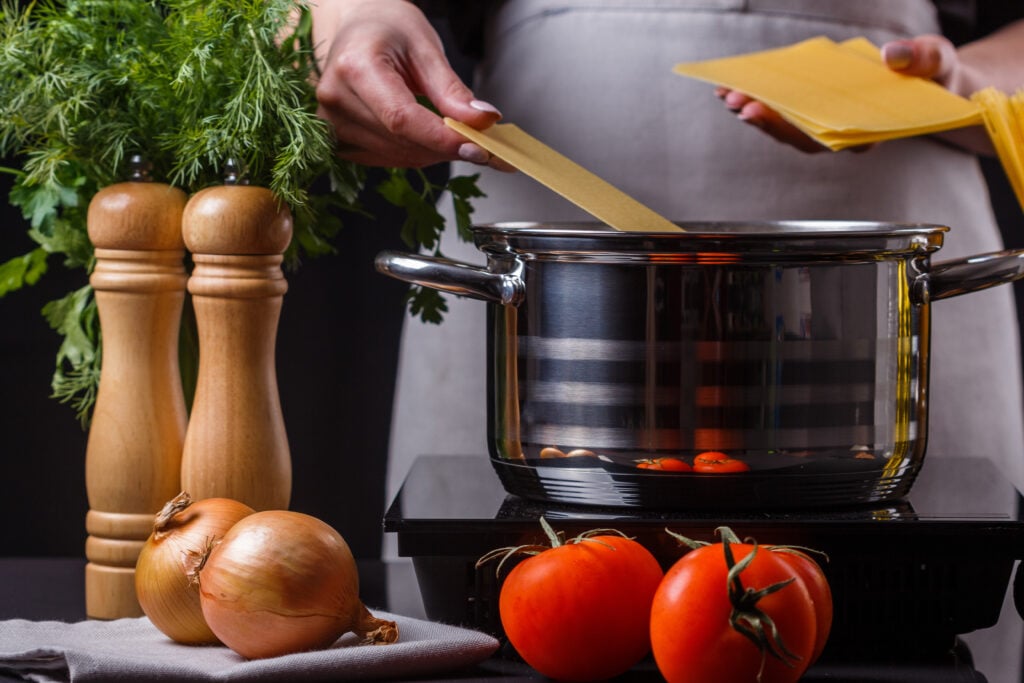
Dried lasagna noodles take between 11 and 15 minutes to cook all the way through. It is best to cut that cooking time in half, so they don’t get overly soggy from baking in the oven. Use a pot that can fit your lasagna noodles lengthwise, so they cook evenly. Next, drain your noodles and lay them on a solid surface (such as a large cutting board) side by side while they are still warm. Keep them flat and don’t overlap the noodles to make them easier to handle after they cool down.
A general rule of thumb for boiling lasagna noodles is that it takes about one minute per square/rectangle inch in your pan. If you’re following a recipe, follow whatever time they recommend on their instructions. Just keep in mind that this could vary depending on what type of noodle you use and how thin or thick they are. For example, if you have a thicker noodle with more mass, then it will take longer to cook than a thinner less dense one.
You also want to make sure that the noodles are al dente so that they don’t get too soggy when baking in the oven. If you are using oven-ready lasagna noodles though, this is not a concern. Read section #3 if you are using oven-ready / no-boil lasagna noodles.
2. How to Cook Lasagna Noodles without Boiling them? (For Regular Lasagna Noodles – Not the ‘No-Boil’ Kind)
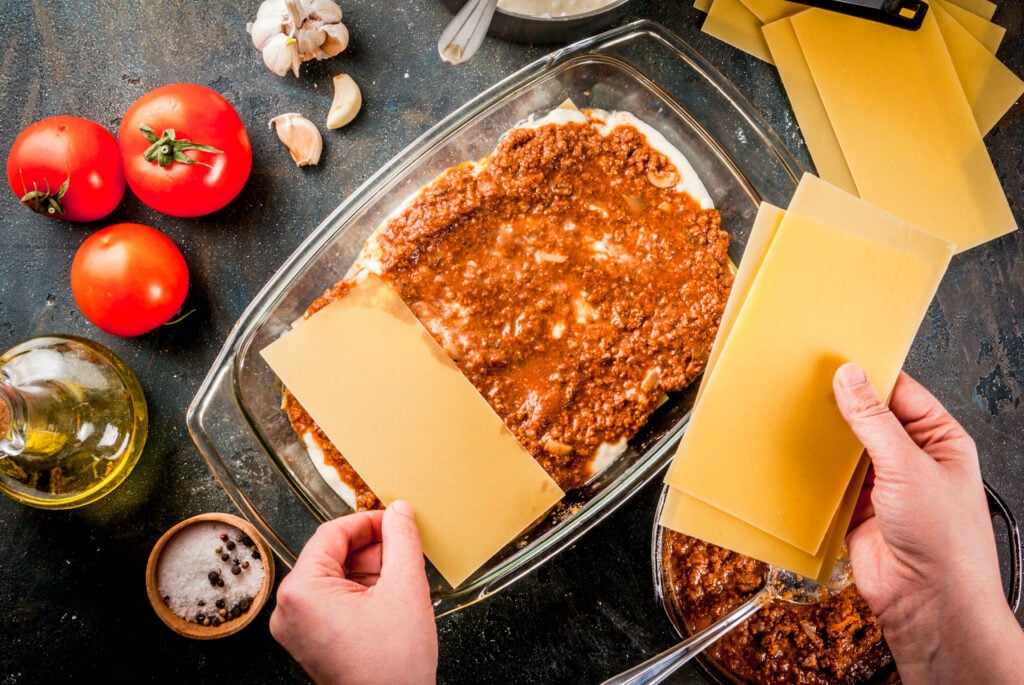
There’s 2 methods you can use if you have regular lasagna noodles, but aren’t wanting to boil them.
The 1st method is doing a lasagna noodle soak. Just fill a baking dish with hot tap water and let the noodles soak in there for about 30 minutes. We recommend letting the noodles soak while preparing the rest of the lasagna ingredients.
The 2nd method involves placing the regular lasagna noodles straight into the layered lasagna, making sure that sauce or ricotta is touching both sides and every inch of the noodle. To ensure this method works properly, feel free to add more liquid to the sauce as it will get soaked up by the noodle during the baking process.
To see our recipe for this method, check out our Lasagna Recipe without Cooking Noodles.
Noodle Option 2: Oven-Ready / No-Boil Lasagna Noodles
3. How to Use Oven-Ready Lasagna Noodles (Also Known as No-Boil Noodles)?

Oven-ready lasagna noodles will reduce your prep time and are a great alternative to traditional lasagna noodles, and they taste just as good. Keep in mind that oven-ready noodles shouldn’t be overlapped but placed side by side in an even layer so they will cook through all the way. You can always add a little more sauce than usual to ensure there’s enough liquid for your noodles to soften up.
Try our favorite brand here.
4. Can You Boil the No-Boil Lasagna Noodles?
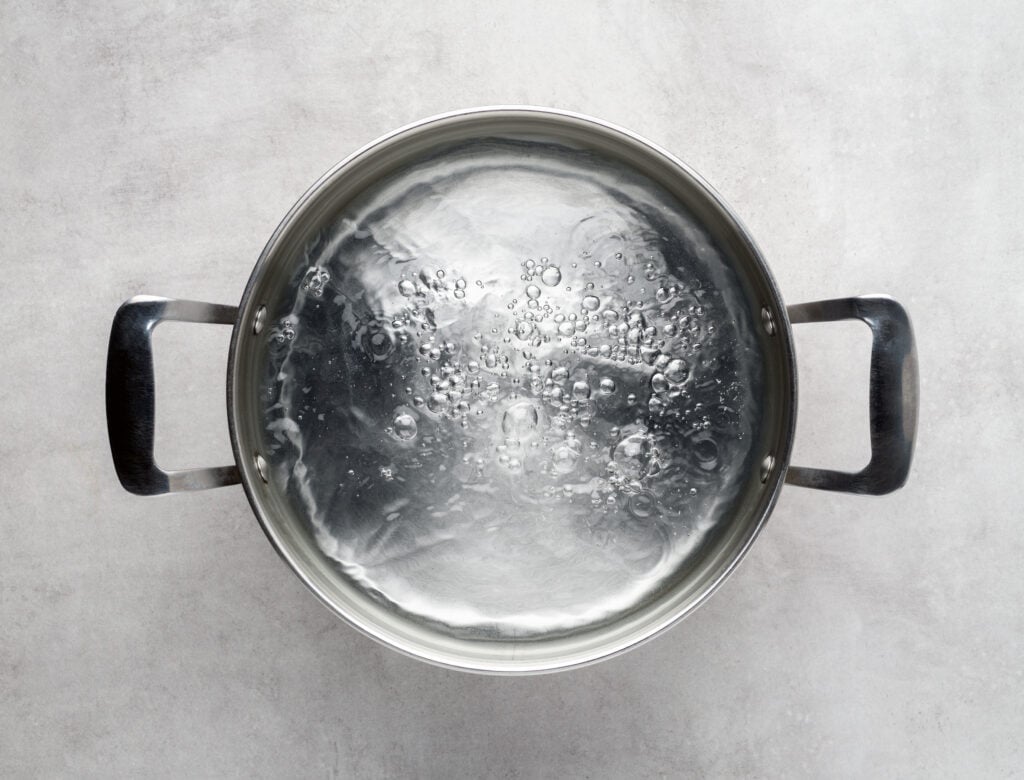
While no-boil noodles don’t need to be boiled when placed in a lasagna, you may need to boil them for other uses (like lasagna roll ups). They can still be boiled but keep in mind that they will need a much lower amount of time compared to regular lasagna noodles. The amount of time needed can vary depending on size and thickness of sheets, but we recommend 3-5 minutes, and checking throughout the process.
5. How to Keep Lasagna Noodles from Sticking?
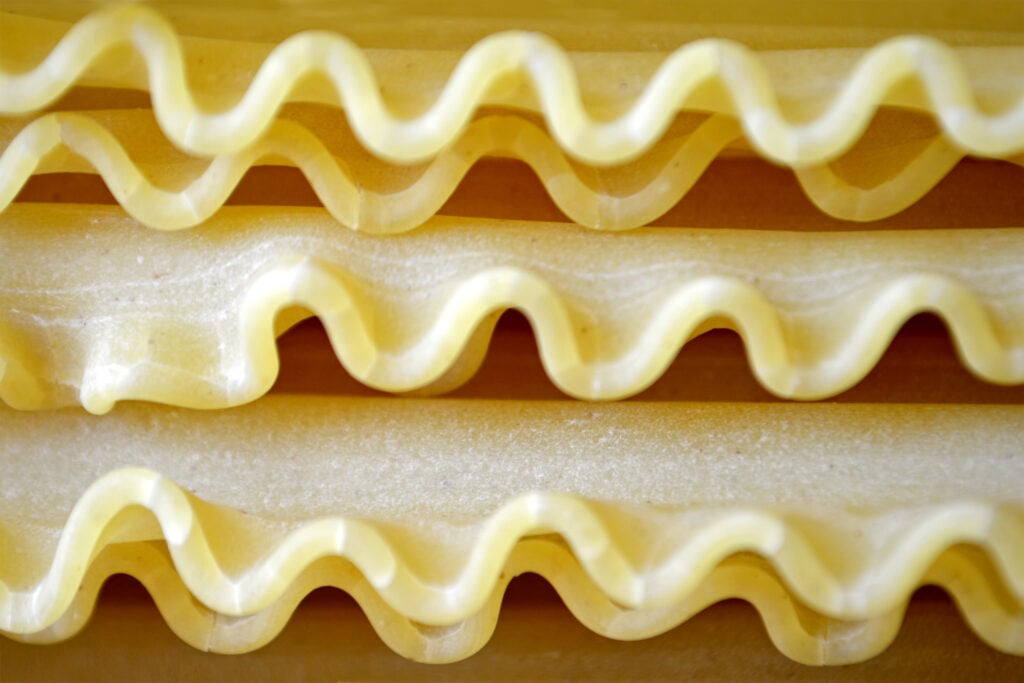
If you are boiling your lasagna noodles, you can add a little bit of olive oil into the boiling water before putting the noodles in. This will provide the noodles with a slippery sheen and will keep them from sticking to one another.
In addition to that, you will want to make sure you are using a large enough pot for the noodles to move around freely and not stick to one another during the boiling process.
If you are not boiling the noodles, make sure there is enough liquid in the sauce which will prevent the noodles from sticking.
Layering
6. How to Layer a Lasagna?
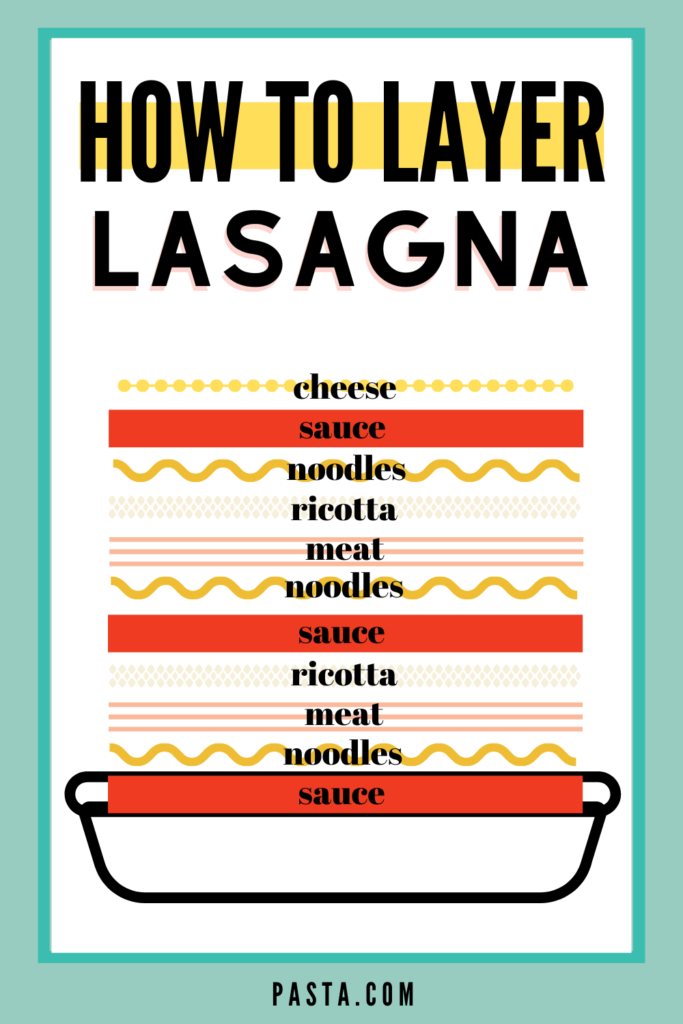
To ensure you will have enough room for all the layers, a 9” X 13” pan that’s at least 3” deep is necessary to have on hand. Assembling this dish is a labor of love, so here’s the best way to layer lasagna. Start with a layer of sauce followed by noodles that overlap each other by about an inch. Next, add a layer of meat and then ricotta. Do those four layers again (in the same order), and add your last layer of noodles, all the remaining sauce, and a layer of melty cheese, such as mozzarella, to finish things off.
And remember, “If there’s less than three layers, it’s probably not a lasagna,” says Chris Morocco, Senior Editor at Bon Appetit.
Heating the Lasagna
7. How Long Does it Take to Bake a Lasagna?
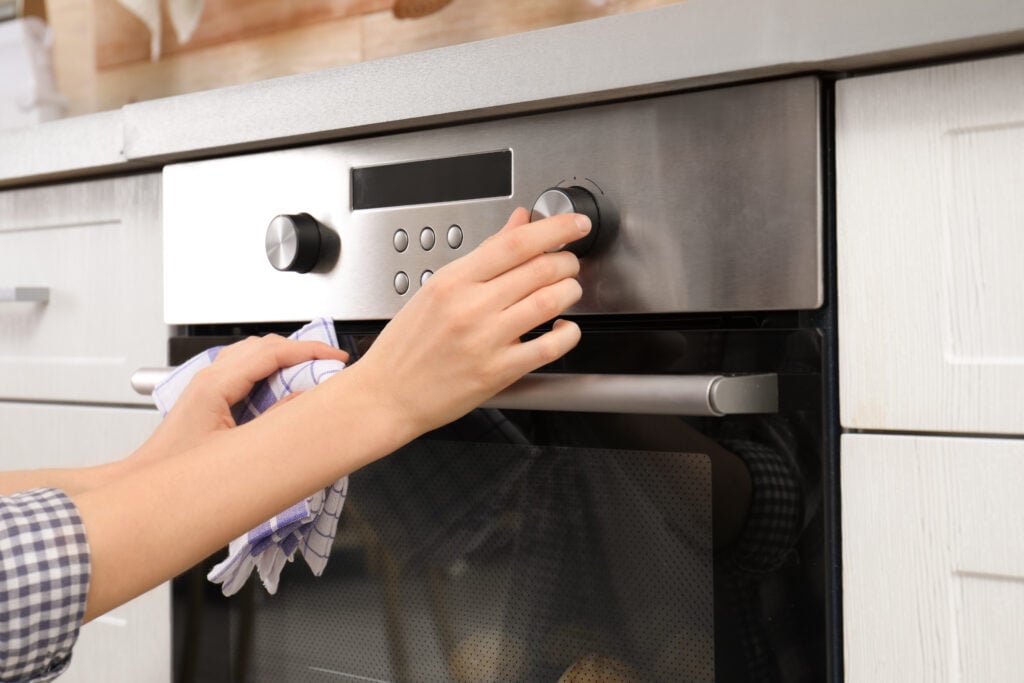
In a 350 degree F oven (approximately 175 degrees C), a lasagna will be ready in 30 minutes. If you need to speed up the cooking process, you can raise the temperature to 375 degrees, but be careful not to over bake the lasagna. The sweet spot is 350 degrees, so we don’t recommend a higher oven temperature in most cases.
8. Should You Use a Glass or Metal Baking Dish for Your Lasagna?
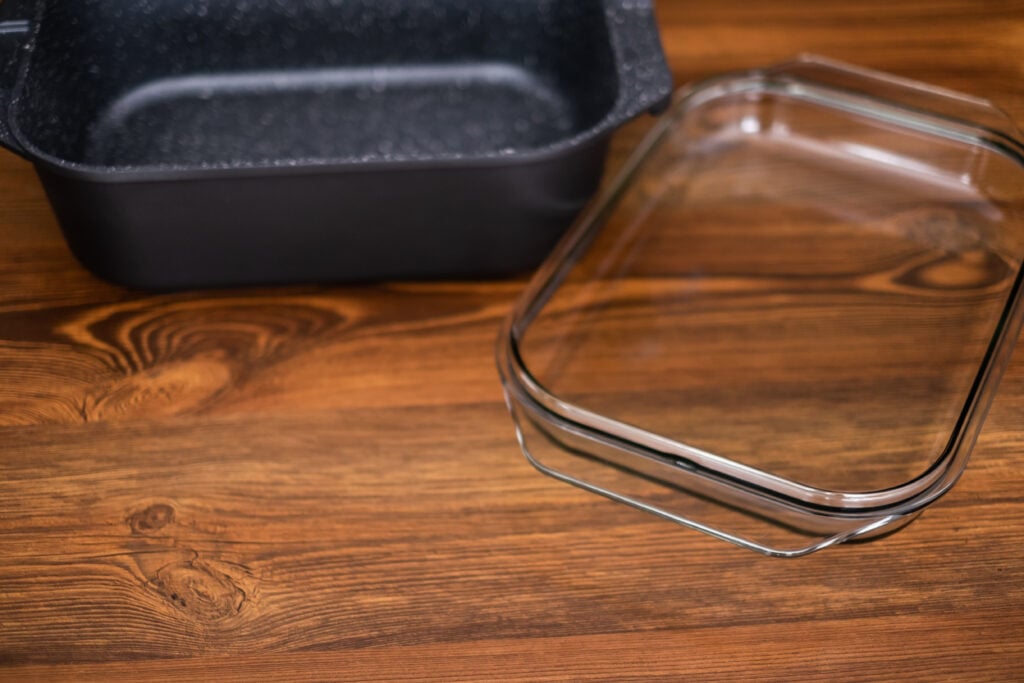
Glass baking dishes are ideal for lasagnas since they are less prone to sticking and tend to cook more evenly than metal pans. You should precook your meat and noodles regardless of the type of pan you choose to use.
If you use a metal baking dish, remember that metal heats up quicker than glass, so you’ll have to check to ensure the top doesn’t brown too quickly. If that’s the case, put tin foil on top of the dish up until the last 5 minutes.
9. How to Reheat Lasagna in the Oven?
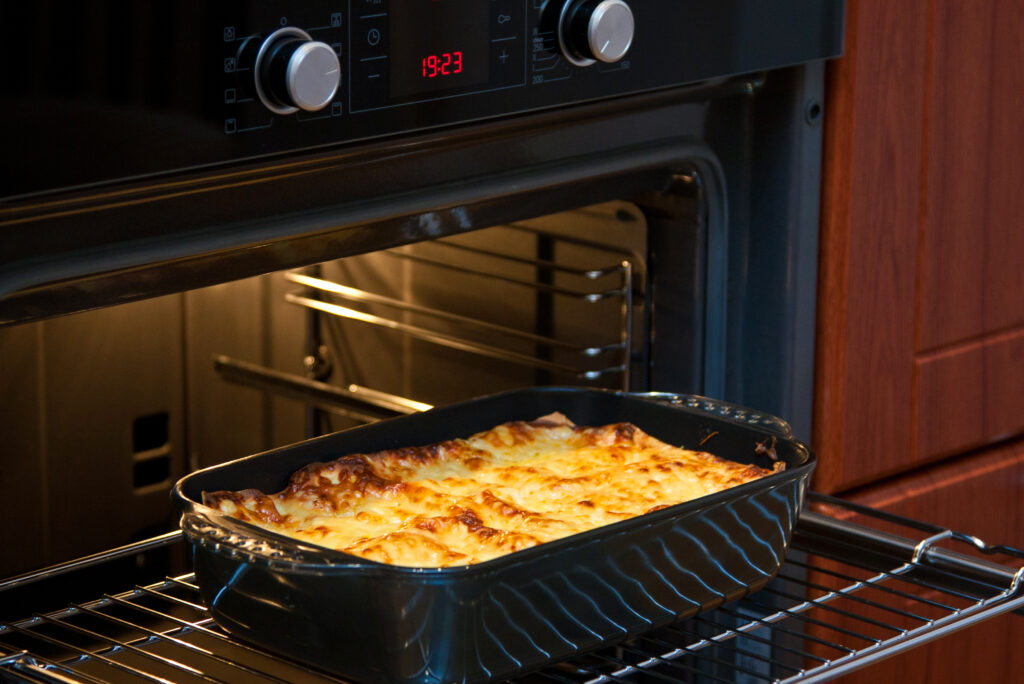
You should always reheat leftover lasagna in an oven. A microwave simply doesn’t do it justice, so do yourself a favor and reheat your lasagna the recommended way. Preheat your oven to 350 degrees and cover your dish with tin foil. Let it cook for about 20 minutes or until you see the sauce bubbling around the edges and the cheese has remelted.
10. How Long Does it Take to Cook a Frozen Lasagna?
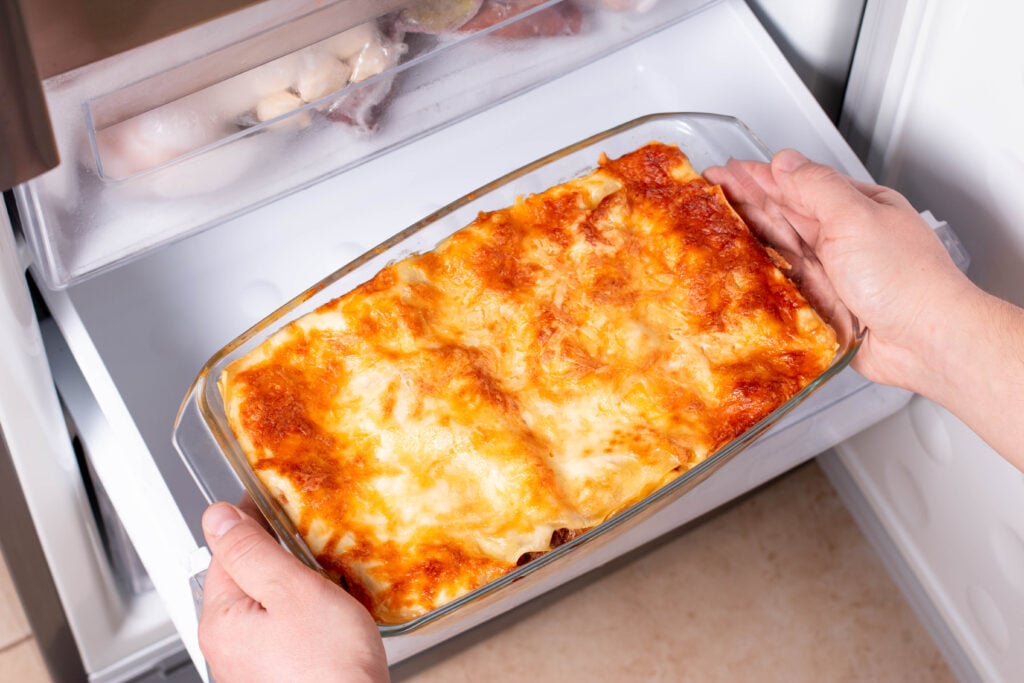
From a thawed state, the cooking time is close to one hour when baked around 375 to 400 degrees F. Be sure to keep a frozen solid lasagna covered in tin foil the entire time. Refrain from cutting into baked lasagna that’s piping hot, the cheese will melt all over the place, and you’ll end up with a big mess. Instead, allow it to cool for at least 15 minutes before serving.
Making a perfect lasagna is an artform which honestly takes practice. But even practice lasagnas are great to eat. We hope you won’t shy away from making homemade lasagna. Many hands make light work, so encourage your friends and family to help assemble this yummy pasta dish with you for your next big gathering.
If you like this post, we think you’ll really like our Best Frozen Lasagnas post.


